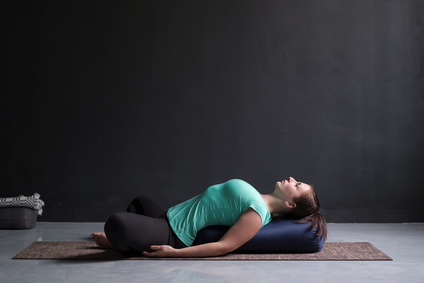What is Bell’s Palsy?
A “palsy” refers to paralysis, often accompanied by involuntary tremors.
Bell’s Palsy refers specifically to the paralysis of the Facial Nerve. As there are two Facial Nerves, one on each side, symptoms are on only one side of the face. It may not be a full paralysis… it is a spectrum that varies from twitching weakness paralysis of some or all the muscles innervated by the Facial Nerve.
What are the symptoms?
The facial nerve controls muscles responsible for facial expressions, eye closure (which includes blinking), tear and saliva glands, taste sensations in the tongue, and some of the smaller muscles in the ear. Therefore, symptoms can vary in their presentation and complexity, but may include:
- Initially, sensitivity to noise, though this improves more quickly
- Initially, pain near the ear and jaw, though this improves more quickly
- Initially, tinnitus (ringing in the ear), though this improves more quickly
- Headaches, and /or tension in neck musculature
- Decreased taste sensitivity
- Drooping or the eyelid and/or corner of the mouth on the affected side, as muscle tone is less than usual
- Difficulty or inability with facial expressions, such as raising the eyebrow on that side, furrowing the brow, flaring the nostril, smiling, frowning, blowing up the cheek, whistling
- Difficulty drinking or chewing because of difficulty keeping the lips sealed
- Slurred speech because the speech muscles on the one side are not functioning at full capacity
- Eye dryness (which causes the eye to tear more often) and risk of infection because of the lack of full lid closure and blinking
- Depression, as symptoms can cause self-consciousness and anxiety in social situations, thereby limiting social life
What causes Bell’s Palsy?
Sometimes it is due to a viral infection: as the nerve becomes inflamed, the inflammatory response causes compression of the nerve and limits the nutrition to that nerve from the blood supply. This is why your physician will prescribe anti-viral medication, usually for a two-week course.
Often, the cause is unknown (this is what “idiopathic” refers to).
It can also be due to damage of the nerve from trauma (e.g. motor vehicle accident, a blow to the face, side-effect of facial surgery) or compression of the nerve from a tumour.
Bell’s Palsy can happen at any age, though it’s more common in the 15 to 60-year-old range. Women and men are equally susceptible. However, there is a higher incidence in people with diabetes, respiratory issues (e.g. the flu), and during pregnancy, usually in the third trimester.
What is the cure for Bell’s Palsy?
Bell’s Palsy does not have a cure, though your physician will usually prescribe antivirals and corticosteroids for the first two weeks. Usually, a work-up will be done first to rule out cerebrovascular causes (i.e. stroke), as symptoms can be similar.
Most cases of Bell’s Palsy recover fully with or without treatment (AKA spontaneous recovery), though medication and therapy are meant to try and speed up the process.
However, other management of this condition includes:
- Eye protection (lubricating eye drops or ointments, as well as taping eye shut during sleep, in order to protect from irritation and infection)
- Physiotherapy (muscle stimulation with massage and exercise therapy)
- Acupuncture (by an acupuncturist, or often included in physiotherapy treatment)
- Relaxation therapy and strategies (as stress can be a symptom aggravator)
- Surgery (a rare last resort option, appropriate only for very specific cases, usually ones due to facial trauma)
What does Physiotherapy do for Bell’s Palsy?
The patients with Bell’s palsy we treat at our North Oakville Physio clinic have been experiencing symptoms for a variety of time and different severities. Physiotherapy treatment should be tailored to how each person presents.
- Maintain tissue flexibility of the face, especially the longer the paralysis has lasted
- Manage neck musculature tension that develops secondary to the facial paralysis
- Education on facial exercises at home to both maintain flexibility (stretching) but also stimulate facial muscles (engagement and strengthening)
- Muscle stimulation can also be done with acupuncture by physiotherapist
- Retrain muscles if synkinesis develops, often with mime or feedback therapy (synkinesis means “simultaneous movement”; it occurs when there is cross-wiring during nerve regeneration as function begins to improve in Bell’s Palsy, i.e. different muscles that do not normally contract together during a facial expression now contract together, for example: smiling causing an involuntary eye squint)
Overall, the evidence on physiotherapy management of Bell’s Palsy suggests that individualized facial exercises in cases that are either chronic and/or moderate paralysis may improve facial function. Facial exercises in the early or acute stage in more severe cases may also reduce recovery time and long-term effects. Additionally, some evidence suggests a benefit from acupuncture stimulation.

How long does it last?
Mild cases may last as little as two weeks. More often, it takes at least 3-6 months for full resolution of symptoms. Sometimes, it can take 9-12 months. Occasionally, though symptoms improve to an extent, they do not fully recover.
What can I do at home?
- Make sure you are protecting your eye
- Keep facial muscles mobile with stretches
- Perform individualized exercises your physiotherapist has prescribed regularly
- Explain what is happening to those around you and continue your day-to-day as normally as you are able
- Some research indicates that watching funny shows or dramas that invoke emotional responses can help stimulate facial responses, as often our facial expressions have an emotional connection (e.g. we smile or laugh when we find something funny, or we frown when we are upset or confused)
- Keep in mind that progress is often slow, so don’t be discouraged!

